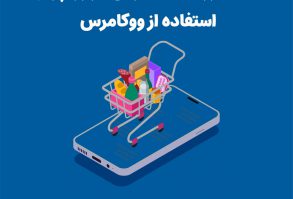The Future Of Work: How AI Will Change Our Interaction With Software
The expert team at Freeform Dynamics offer news and views on the latest hot topics, and pragmatic advice based on real-world experience and meaningful research studies. Beyond passive information delivery, PAIAs can embody a proactive stance, aiding individuals in navigating the information landscape. We give you the inside scoop on what companies are doing with generative AI, from regulatory shifts to practical deployments, so you can share insights for maximum ROI. Join leaders from Block, GSK, and SAP for an exclusive look at how autonomous agents are reshaping enterprise workflows – from real-time decision-making to end-to-end automation. Brian Tanner, Artificial Agency’s CEO, said scripting every possible outcome of a game can be tedious and difficult to test. Their system allows designers to act more like directors, he said, by telling characters more about their motivation and background.
There’s a real risk that these attacks will scale as AI becomes cheaper and more accessible, leading to more victims. Ensuring all AI applications comply with data privacy regulations such as HIPAA in the US or GDPR in the EU is crucial. Patients need assurance that their personal health information is secure and will not be misused. Educational programs can help patients and providers understand the capabilities and limitations of generative AI, alleviating fears and misconceptions through workshops, informational brochures, and one-on-one discussions.
This includes AI assistants capable of understanding complex processes and guiding users through their daily tasks. The rapid evolution of GenAI capabilities—from processing text to understanding images, from answering questions to engaging in reasoning—opens new possibilities every day. They’re succeeding by clearly defining their needs, choosing appropriate technologies, and building complete solutions that deliver sustained value. Instead of positioning AI as replacing traditional front ends, Callens clearly described it as a tool to augment existing point-and-click interaction models that still work well for many users in many scenarios.
- In data protection and governance, there has been a continuous effort to enhance security measures to safeguard sensitive information.
- In short, it would be a digital augmentation of the human being in a way we have never seen before.
- There’s a real risk that these attacks will scale as AI becomes cheaper and more accessible, leading to more victims.
- I believe generative artificial intelligence (GenAI) will help address this 70-year-old challenge.
- Data management, cloud services, data protection and governance, databases, data integration and intelligent platforms have all significantly contributed to the advancement of AI.
Regularly auditing AI systems to ensure they function correctly and safely can help maintain trust, including monitoring for any inaccuracies or issues that may arise and addressing them promptly. When you build these protection systems into your GenAI application from the start, you create solutions that are not only powerful but also trustworthy and reliable in production environments. Remember, the reliability and safety of your GenAI application are just as critical as its performance capabilities. IT teams should set realistic expectations during the requirements phase, especially for complex document structures, when there are significant information accuracy expectations, or when multi-part quantitative analytics is needed. In these situations, it may be important to construct intelligent document processing workflows with people reviewing critical information, analytics, and exceptions. Intelligent document processing technologies that are integrated with large language models (LLMs) can take information extraction to higher levels by providing summaries, capturing context, and mining other semantic information.
AI Revolutionizes Voice Interaction: The Dawn Of A New Era In Technology
Challenges lie in effectively integrating the computational power of machines with the creative ingenuity of humans. To stay ahead, companies must proactively explore how AI can transform their products and services. Google’s Gemini model includes a comprehensive feedback management system where users can provide feedback on AI performance.
Continuous Improvement and Feedback
Each new application brought its own innovations in design, control systems and supporting infrastructure. Just as those early auto pioneers couldn’t have imagined today’s self-driving vehicles, the potential applications of GenAI extend far beyond our current imagination. Just as a vehicle needs a robust chassis and engine mounting system, your GenAI application requires essential operational components.
Preparing unstructured data for intelligent document processing
But generative AI offers the potential to add a middleware layer that makes using these platforms even more frictionless and natural. Using useful queries and natural language, this middleware could convert our vocalized instructions into action via ambient technology hardware like Siri, Alexa and Google Home. Today, companies spend a considerable amount of time and money to create seamless experiences within their user experience and user interface (UI).
More and more organizations are choosing to fine-tune third-party models with their proprietary data to improve performance in their use cases. The development of advanced tools like ChatGPT and LLMs (large language models) is paving the way for a future where humans will interact with digital artifacts in more intuitive and natural ways. Imagine querying an AI about key figures in an Excel spreadsheet or controlling complex machinery through voice commands. Whether in vehicles, machines, sorting systems, production line environments or other complex logistics systems—it will probably be possible to control all of these by voice in the future.
AI And The Democratization Of Music Creation
- PAIAs will evolve, learning from each individual’s interaction patterns, preferences and feedback.
- Cross-functional teams, comprised of human experts and AI specialists, can foster a rich exchange of ideas.
- Using Nvidia’s AI, players can interact with the mechanic, Martel, by asking her to do things like customize the color of a mech machine.
- GenAI’s capacity to personalize and simplify user interactions, provide intuitive guidance and automate complex tasks could allow users to leverage 100% of an application’s capabilities.
- That’s why I took to Callens’ idea of using natural language to refine something you are already looking at – “Show me that by region” or “Change it from units to percentages”, etc.
As we enter the era of Industry 5.0, where humans and machines collaborate seamlessly, artificial intelligence (AI) is poised to revolutionize technology, much like the internet did in the mid-90s. While its full potential may not be immediately apparent, AI is poised to have a profound impact on businesses beyond software development. Just as cloud computing continues to reveal new possibilities, AI’s transformative effects are only beginning to unfold. While new LLM announcements appear weekly with impressive benchmark scores, focusing solely on leaderboard positions isn’t the most effective approach for your business. Successful organizations start by understanding their specific customer needs and use cases. You can then select an LLM from established providers that best matches your requirements for accuracy, speed, and cost-effectiveness.
Plus I have also come across quite a few users who really struggle with them, especially knowing where to start when presented with a blank box. That’s why I took to Callens’ idea of using natural language to refine something you are already looking at – “Show me that by region” or “Change it from units to percentages”, etc. This level of contextual awareness could be really useful for non-analyst users providing more relevant, timely insights to inform decisions without having to define environment and role based parameters explicitly. Looking ahead, Generative CRM is poised to become the central nervous system of the modern enterprise, interfacing seamlessly with other core business functions—from HR and supply chain management to R&D. The entire organizational matrix could potentially align around the intelligent, dynamically evolving customer personas generated by your CRM. Letting algorithms define your customer strategy might seem like a gamble, but in this context, it’s a calculated risk with high returns.
This transformative era emphasizes a cultivation of harmony between innovation and traditional development by identifying any potential problems and quickly identifying past fixes as a solution. For customer service applications handling sensitive data, you need comprehensive content filtering, strict input validation, and thorough output verification—comparable to the multiple security systems in an armored vehicle. Internal document processing applications might require basic content controls and standard validation, similar to the essential safety features in a delivery vehicle. When processing proprietary data in enterprise applications, you need strict access controls and comprehensive audit logging, much like the monitoring systems used in commercial fleet vehicles. Wrapping up, it’s evident that the emphasis on data quality is critical for improving AI’s performance.
Four ways gen AI is improving SAP’s business
Examples so far in the wild seem to show that it’s actually getting much better at the term paper thing, but that it still has work to do when it comes to avoiding a few typical pitfalls for AI chatbots, including presenting misinformation as fact. As we transition from one year to the next, it’s a season of reflection and looking forward. As an analyst, the end of the year is a time to learn from past work, analyze its outcomes and consider its potential impact on the future. AI can significantly enhance human capabilities by augmenting decision-making and automating routine tasks. Cross-functional teams, comprised of human experts and AI specialists, can foster a rich exchange of ideas. Open communication is equally essential, encouraging the free flow of thoughts and feedback from both human and AI sources.



